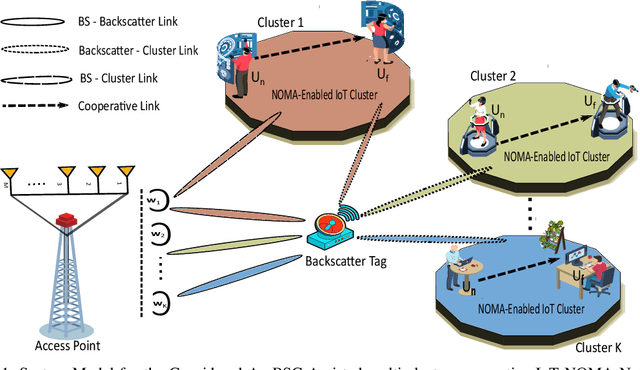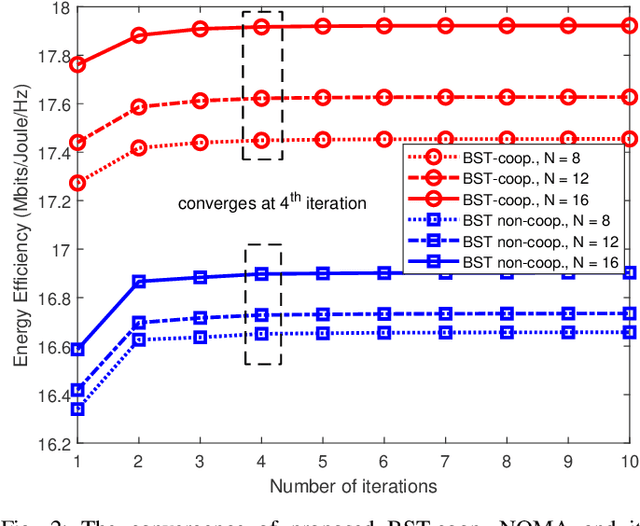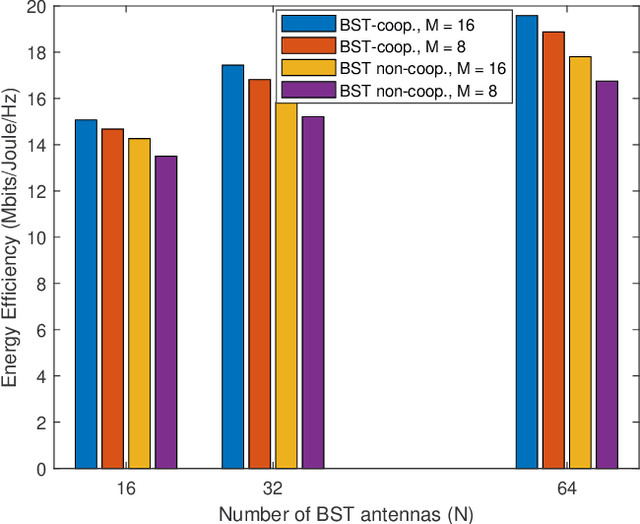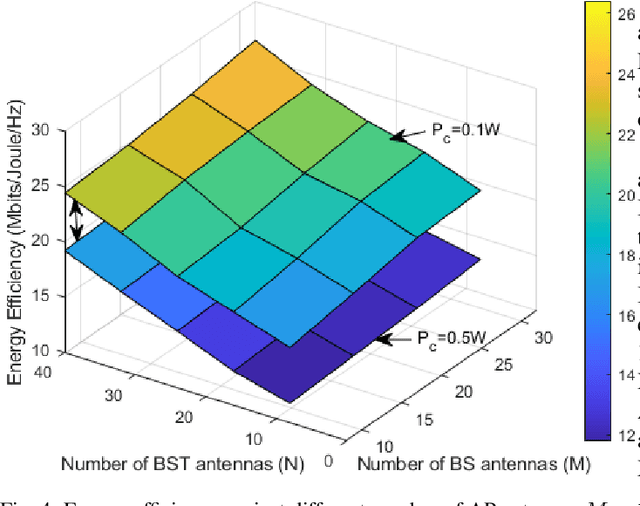Energy-Efficient Beamforming and Resource Optimization for AmBSC-Assisted Cooperative NOMA IoT Networks
Paper and Code
Sep 11, 2022



In this manuscript, we present an energy-efficient alternating optimization framework based on the multi-antenna ambient backscatter communication (AmBSC) assisted cooperative non-orthogonal multiple access (NOMA) for next-generation (NG) internet-of-things (IoT) enabled communication networks. Specifically, the energy-efficiency maximization is achieved for the considered AmBSC-enabled multi-cluster cooperative IoT NOMA system by optimizing the active-beamforming vector and power-allocation coefficients (PAC) of IoT NOMA users at the transmitter, as well as passive-beamforming vector at the multi-antenna assisted backscatter node. Usually, increasing the number of IoT NOMA users in each cluster results in inter-cluster interference (ICI) (among different clusters) and intra-cluster interference (among IoT NOMA users). To combat the impact of ICI, we exploit a zero-forcing (ZF) based active-beamforming, as well as an efficient clustering technique at the source node. Further, the effect of intra-cluster interference is mitigated by exploiting an efficient power-allocation policy that determines the PAC of IoT NOMA users under the quality-of-service (QoS), cooperation, SIC decoding, and power-budget constraints. Moreover, the considered non-convex passive-beamforming problem is transformed into a standard semi-definite programming (SDP) problem by exploiting the successive-convex approximation (SCA) approximation, as well as the difference of convex (DC) programming, where Rank-1 solution of passive-beamforming is obtained based on the penalty-based method. Furthermore, the numerical analysis of simulation results demonstrates that the proposed energy-efficiency maximization algorithm exhibits an efficient performance by achieving convergence within only a few iterations.
 Add to Chrome
Add to Chrome Add to Firefox
Add to Firefox Add to Edge
Add to Edge